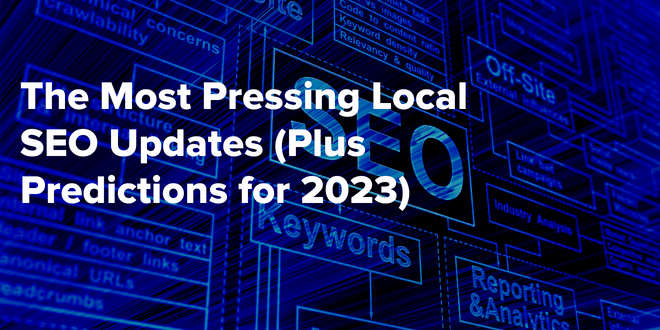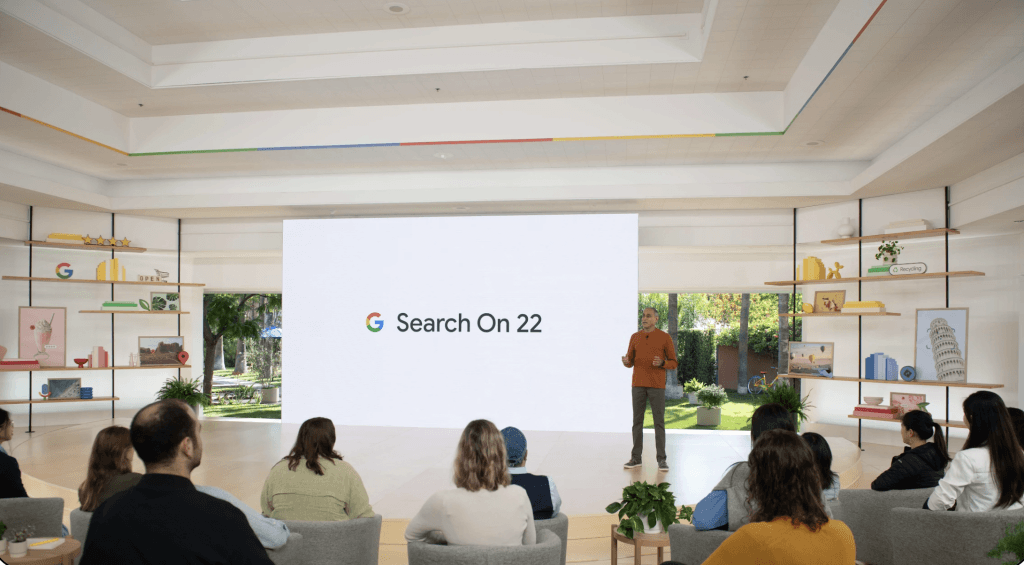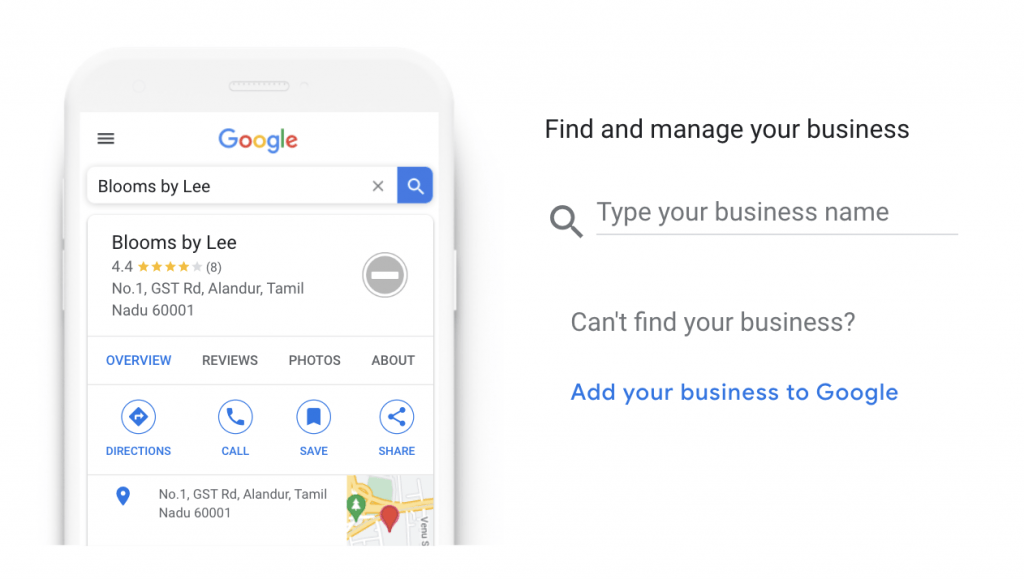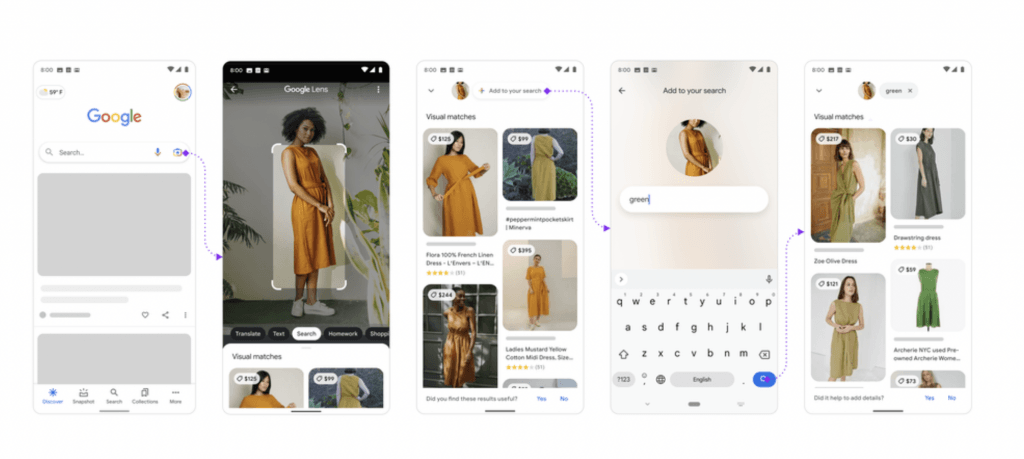Quick Links
2022 has been an eventful year for SEO. Mobile-first indexing entered its final stages, Google revised its 20-year-old Webmaster Guidelines (renaming them Google Search Essentials), and E-A-T became E-E-A-T (the extra E stands for experience), among other things.
Yet, nothing has changed quite as much as the local search.
On Wednesday, September 28th, 2022, Google held its Google Search On 2022 event, where they announced the newest features coming to the platform – including many local search updates.
Changes include exciting user features such as being able to search for specific food dishes from local restaurants, using images to conduct searches, and an exciting Google Maps live view.
What does this mean for your local SEO profile?
It means that you need to adapt to these changes as quickly as possible to retain your current rankings. Not only that, but these changes will also pose exciting opportunities for new tactics to get you to the top of the SERPs.
With 2023 just around the corner, it’s crucial to gear up for the new year by checking out the most accurate predictions for how SEO is set to change going forward.
Luckily, that’s precisely what we’re here to do.
Read on to learn about the most important local SEO updates as well as what will matter most for SEOs in 2023.
2022 in Review: What Were the Biggest Developments in Local SEO?
The SEO industry saw some significant changes and updates in 2022, with 10 confirmed Google algorithm updates.
In early December, Google implemented continuous scroll on desktop search results. That means there’s officially no longer a page 2 of search results (time to move all those dead bodies).
SERP features also received an overhaul, with some search queries now featuring 2 or more featured snippets, ‘other sites say’ snippets, and ‘from the web’ snippets. Beyond that, Google began using MUM (Multitask Unified Model) to determine a general consensus for search queries.
Doing so has helped them reduce ‘false premise’ results (unrelated results that don’t satisfy your search intent) by 40%.
The switch from Google My Business to Google Business Profile saw more changes to the platform than just the name change. Most notably, local business owners can now edit their listings without having to dig through tons of lists and menus.
Instead, you’re now able to edit your local listings (think your business name, address, and phone number) straight from Google Maps and Google Search.
Many local SEO updates were announced at the Google Search On 2022 event, which will surely mix up the local search results. A lot happened, so let’s take a look at the most important updates.
Google’s Multisearch ‘Near Me’
Multisearch was arguably the most significant new search engine feature that rolled out in 2022.
Starting in April, Google searchers were able to use images or screenshots instead of text-based queries.
It works by using your phone’s camera (powered by Google Lens) to search for images online. Users can also add text on top of the image to make the search more specific.
Google’s goal was to allow users to ‘search beyond the box’ and ask questions about the things they see.
The applications for this new feature are vast, as you can use multisearch to find products, educational information, tutorials, and more.
For instance, if you take a picture of your dining set and add the text ‘dining room table,’ Google will help you find a matching dining room table for your silverware.
How does this affect local SEO?
During Google Search On 2022, it was announced that multisearch queries will include local SEO terminology, such as ‘near me.’
That means users can discover your local business through image searches, which is yet another way prospects can find you online.
Optimizing your content for local multisearch
Multisearch is certainly a convenient feature for Google users, but how will it affect your local SEO strategy? More importantly, will it impact your current local rankings?
After all, every time new features are added to search engines, SEOs must devise ways to optimize content for them.
Since multisearch is still so new, there’s a noticeable lack of information on how to optimize for it.
However, Google’s John Mueller has a few words of advice for webmasters.
He states, “if your content is findable in search, and if you have images on the content and those images are relevant, we can guide people to those images or to your content in multiple ways.”
He also notes that “there’s not a direct effect on SEO or anything like that.” In other words, if your content is already ranking in the top 5 local results or local pack, multisearch won’t change that.
What you should do is ensure your website is chock-full of helpful content that contains relevant, high-quality images. You should also optimize your Google Business Profile (GBP) to include the most up-to-date information, such as your NAP (name, address, phone number) and business hours.
If you don’t have a GBP, you likely won’t appear in Google Maps or the local pack, so you should definitely create one (or claim an existing business listing). Including Google reviews on your profile is another good idea, as that’s a perk for both your customers and search algorithms.
Finding Local Restaurants By Searching for Menu Items
Sometimes users aren’t looking for specific restaurants but rather a certain dish that they’re craving.
For instance, say you’re in the mood for a barbecue chicken pizza, but you aren’t sure which of your local pizzerias offer them.
In the past, you’d have to take to Yelp or other directories to find specific menu items, but as of September 2022, the new Google update grants users this ability.
By searching for ‘Google’s John Mueller ,’ Google will display a results page with a list of all the local restaurants in the area that serve that dish. Besides that, you’ll also get to see pictures of each dish, user reviews, and the rest of the menu.
According to Google’s research, 40% of their users already had a dish in mind when searching for food online, which was the reason for the update.
This feature adds a few new ranking factors for local restaurants, so it’s crucial to optimize your GBP if you want your restaurant to appear in these new types of searches.
For one, you’ll need to include high-quality pictures of each menu item, as well as detailed descriptions and reviews.
That means it’s time to bust out the camera and lighting kit if you don’t already have pictures of each dish online. If your barbecue chicken pizza has a mouth-watering photo, enticing description, and numerous 5-star reviews, you’ll likely pick up a majority of the business from local queries looking for it.
Combining multisearch and searching for food dishes
Users can now search for specific menu items using multisearch, which adds another layer of complexity to these new features.
For instance, if you wanted to find the best plate of spaghetti in your area, you could select a photo of spaghetti from your photo library and add the words ‘near me.’
Google will understand what you mean, and you’ll see a list of all the local restaurants offering spaghetti in your town. This further reinforces the need for high-resolution images of every menu item you offer; otherwise, you’ll miss out on tons of potential traffic.
Google Maps Live View & Neighborhood Vibe
Small businesses now have even more incentive to create Google Business Profiles, as Google Maps has undergone a significant transformation.
First, Google’s Neighborhood Vibe is making Google Maps more interactive and personal. As you browse neighborhoods, you’ll get to see user-uploaded photos and videos of the area from various social media profiles.
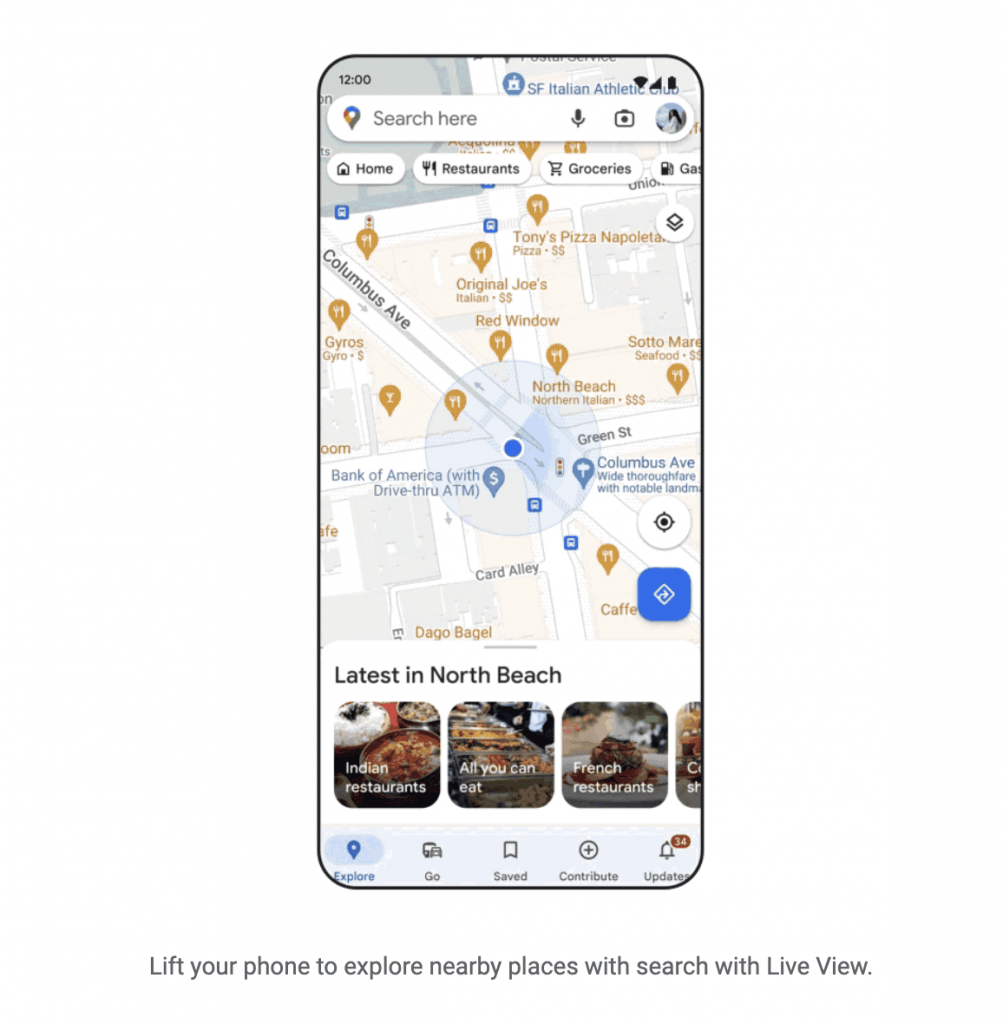 This is meant to let you feel the ‘vibe’ of the neighborhood, such as local hot spots to eat, drink, and dance.
This is meant to let you feel the ‘vibe’ of the neighborhood, such as local hot spots to eat, drink, and dance.
Google Maps also has an interactive live view now, which will display the GBPs for local businesses. Users will get to see your business name, hours of operation, user reviews, and how busy you are at the moment.
What do these two features mean from a digital marketing standpoint?
They mean you’ll need to keep your GBP up-to-date now more than ever before. The last thing you want is for a prospect to see your business hours in the Google Maps live view only to realize they aren’t correct whenever they try to visit your location.
You’ll also need to engage with your social media profiles on Facebook, Instagram, and Snapchat. That will increase the chances of users taking exciting photos and videos of your business and then sharing them online with friends.
The Face of Local SEO in 2023
Now that you know more about the essential local SEO updates of 2022, it’s time to look forward to 2023.
How is your local SEO strategy likely to change?
There’s sure to be more information coming out about how to optimize your content for multisearch, as it’s a feature that’s sure to stick around.
Mobile-first indexing isn’t going anywhere, so you’ll need to ensure you have a responsive design if you don’t already. Not only that, but GBP is going to matter more than ever, so proper optimization is critical.
Besides that, having a lightning-fast website that offers a stellar user experience is still a must, thanks to the Google Core Web Vitals test and the ever-growing standards of the average internet user.
Final Takeaways: Local SEO Updates
2022 saw many significant changes and updates for the SEO world, and local search wasn’t left out by any means.
Multisearch, Google Maps Neighborhood Vibe, and searching for food menu items are all significant advancements, and you’ll need to optimize your content accordingly.
Do you need help forming a local SEO strategy that considers all these updates?
Then it’s time to drop everything and check out our outstanding local SEO packages. We also offer managed SEO, local business listings, and local reviews, so don’t wait to get in touch.



